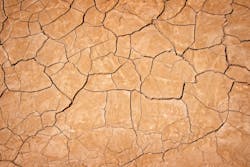Where Do You Ground?
In the United States, the term “grounding” is often used when the term “bonding” should be used. In essence, grounding means you connect equipment to the ground (dirt) and bonding means you connect equipment via a metallic pathway [Art. 100].
Article 250 provides the requirements for grounding and bonding. If you’re working on the load side as a maintenance electrician in a factory, you can (in most cases) ignore all of Art. 250 except for Part V Bonding. That’s because you don’t ground on the load side, you bond there.
Of course, “ignore the grounding requirements” is not a hard and fast rule for the factory electrician.
For example, your job may entail maintenance of the lightning protection system. Or perhaps you need to work on a separately derived system (SDS); this is a system with no direct connection to conductors originating in another system. Stop and think about transformers for a moment. They fit this definition, don’t they? Yes, except for autotransformers.
What about generators? That can be complicated to sort out; carefully read Sec. 250.30.
